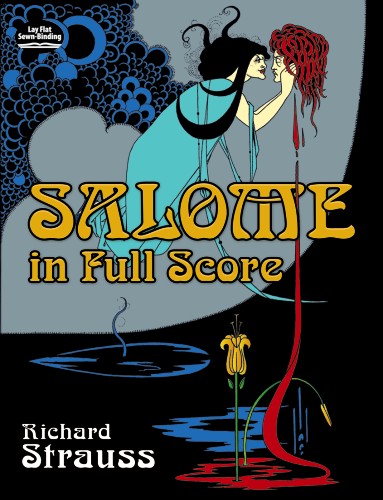
Dover Publications - 486
Strauss Salome in Full Score
Richard Strauss
Strauss Salome in Full Score
Juilliard Store
144 West 66th Street
New York NY 10023
United States
The New Grove Dictionary of Music and Musicians (1980) offers ample reason why the complete score to Strauss's Salome is worthy of study. "It is virtuoso display of the creation of atmospheric colour by instrumental means." There are, of course, other reasons — it is enough to say that since opening night (December 9, 1905) it has ranked among the basic works of 20th-century music.
Salome (after the Oscar Wilde play) was Richard Strauss's first great operatic success, and like many of his works, caused controversy. The problem was that Strauss succeeded too well in capturing what fin-de-siècle decadence was seen in Wilde — succeeded via an "instrumental inventiveness that is breathtaking" (Grove). The orchestral virtuosity is vividly apparent in the parts for percussion and for certain less commonly used instruments — heckelphone (here first introduced), xylophone, contrabassoon — which found their raison de'étre in Salome.
There can be no question that this edition presents the definitive score. It reprints Strauss's own copy, obtained on loan from the vaults of the Eastman School of Music in Rochester — a large-sized, limited, numbered edition signed by the publisher and very likely the one Strauss used on the conducting podium. For this edition the cast and instrumentation information has been translated into English; with clear notes, wide margins, and durable binding, this inexpensive reprint will serve many years on the podium, music stand, or library shelf, enabling musicians and listeners to discover its beauties (including Salome's famous "Dance of the Seven Veils") for themselves. It is the authoritative way to experience, in the words of one critic, "the most febrile opera or music-drama ever written."

